Today we’re going to be looking at Wizards & Co, a light strategy card game based around the idea of placing monsters into a dungeon and then collecting gems as fights sort of auto-resolve.
I played this with Jack (10), but I also played it again with both Jack and Toby (7).
In the past, we’ve reviewed both versions of the game Challenges, and those two games are excellent in that they really do capture the look and feel of the auto-battler style popularised—at least in card game terms—by the Battlegrounds mode in the online game Hearthstone.
Wizards & Co has a similar feel, but with a bit more strategy and worker placement elements. You set up the game with a number of dungeon boards depending on the number of players, and place these octagonal dungeon boards on the table. Each board has a number of gem slots and entrances where you can place monsters. All players start with the same monsters in their deck, though more can be earned along the way, and once you’re more experienced, you can build your own deck using different monsters, giving the game long-term customisation, which is always a good sign.
Once the dungeons are set up with treasure you can earn, and an enchantment that modifies that dungeon, the game essentially follows a fixed structure. You start off with placement: on your turn, you can place a creature at a dungeon entrance, either face-up or face-down. You can place either one or two cards at the same dungeon.
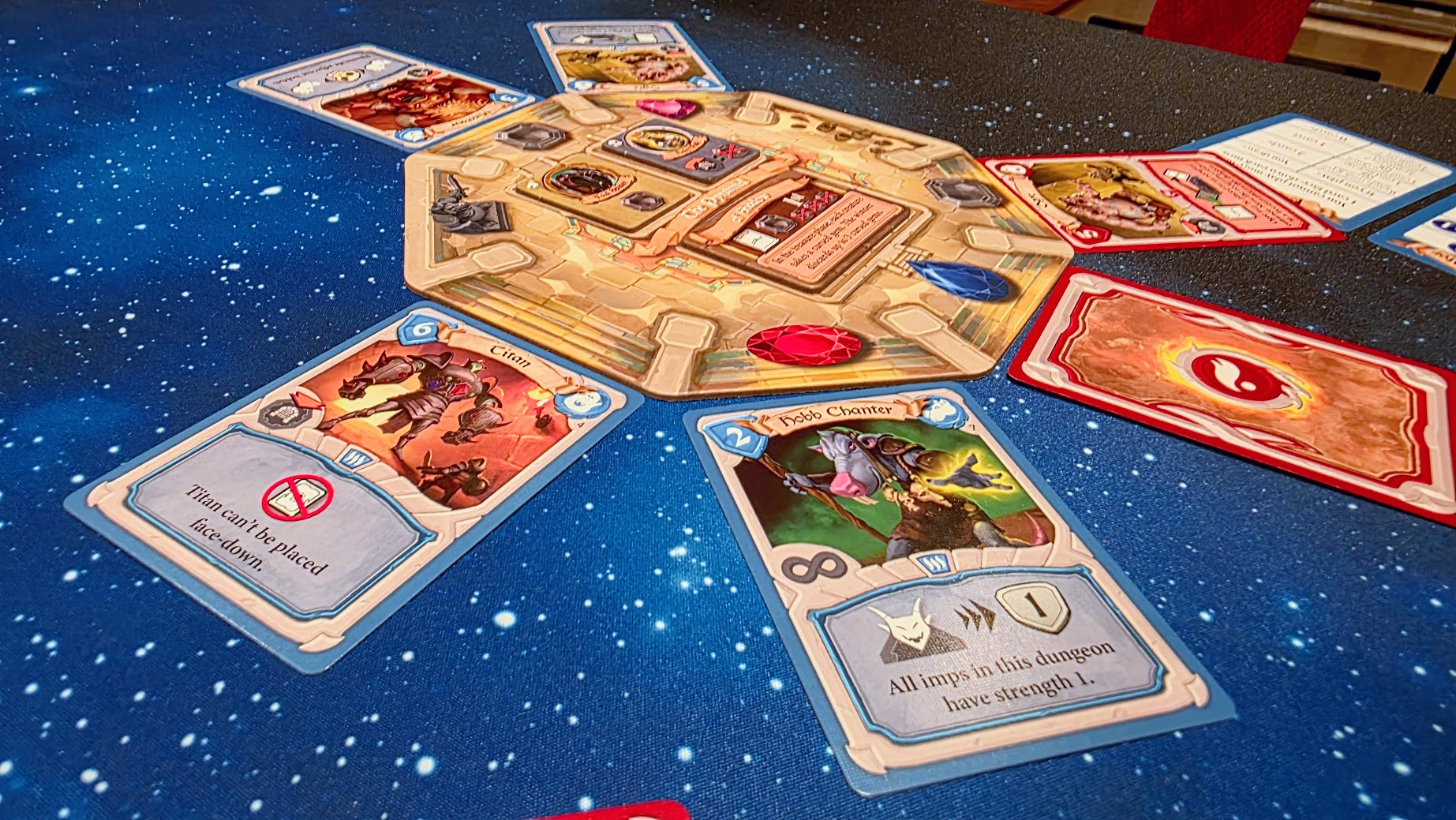
Now, you’d think it’s always best to place two cards, but the downside is that the fewer cards you place, the more new cards you can draw. This creates a really interesting tension that goes against standard card game logic. It works well because your deck isn’t massive—you know what’s in there—so the real question becomes: do I race to get something down to grab the best gems early, or wait to get stronger cards into play and try to win the dungeon when the inevitable fight kicks off?
This back-and-forth continues until a dungeon is full, and then the battle phase begins. Actions resolve clockwise from the statue on the dungeon board, and this is really important—some monster abilities cancel others, and some kill other monsters outright. Placement becomes crucial, especially if you’ve hidden something powerful face-down and need it to activate before an opponent’s monster does.
Once all actions are resolved, any surviving monsters collect the gems from the spots they’re on, adding them to your score pile.
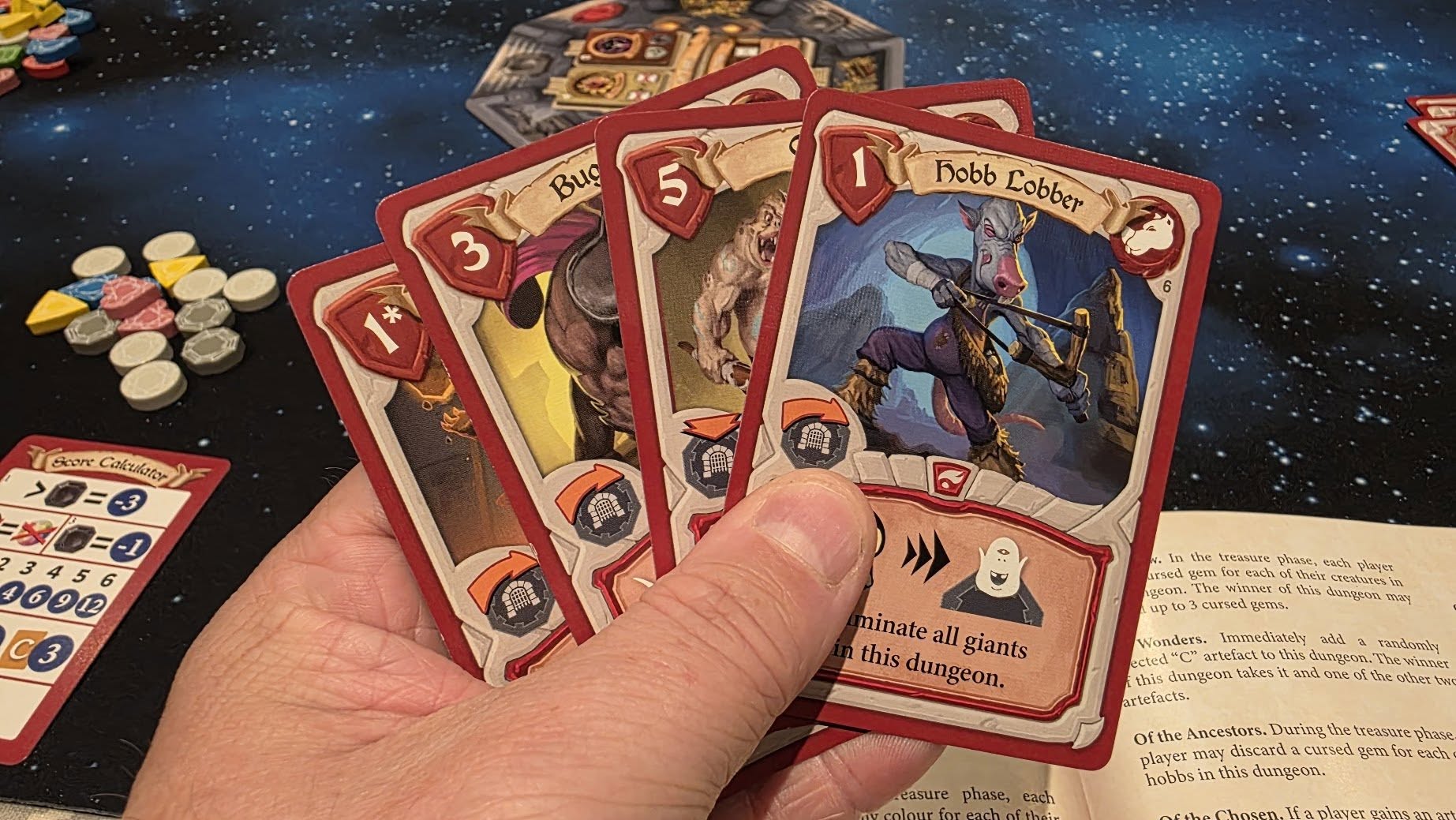
One really interesting aspect is the presence of cursed gems. These are worth negative points, but sometimes you have no choice—they’re tied to specific entrances. What’s clever is that most monster abilities, in fact, almost all of them, can affect your own monsters as well as your opponent’s. So, it’s entirely possible (and often necessary) to destroy or move your own creatures to avoid collecting cursed gems or to protect your position. I found myself doing negative things to my own monsters to avoid worse outcomes, and that tactical decision-making is what really makes Wizards & Co stand out. It’s not just “you versus them”, sometimes it’s “you versus you.”
As well as collecting gems, you’re trying to get the highest score in a dungeon to claim the treasure. You get points for being the player to finish a dungeon, and extra treasure if you score highest there. These treasures can often be used as enchantments or gear to boost your strength, and many also score points at the end.
Every time a dungeon is completed, you flip the card over and start again with a new layout. The game continues until there are no enchantments left. At that point, you total your scores, subtracting cursed gems from your total, and adding points from treasures or other bonuses you’ve collected along the way.
The components are decent, though nothing especially fancy. The wooden gem tokens are really nice and add to the overall feel. Everything else is standard cards and cardboard, but it all works well. It also comes in a very pleasing, smaller-sized box, reminiscent of something like Kluster, which is a big bonus for a game that doesn’t feel small.
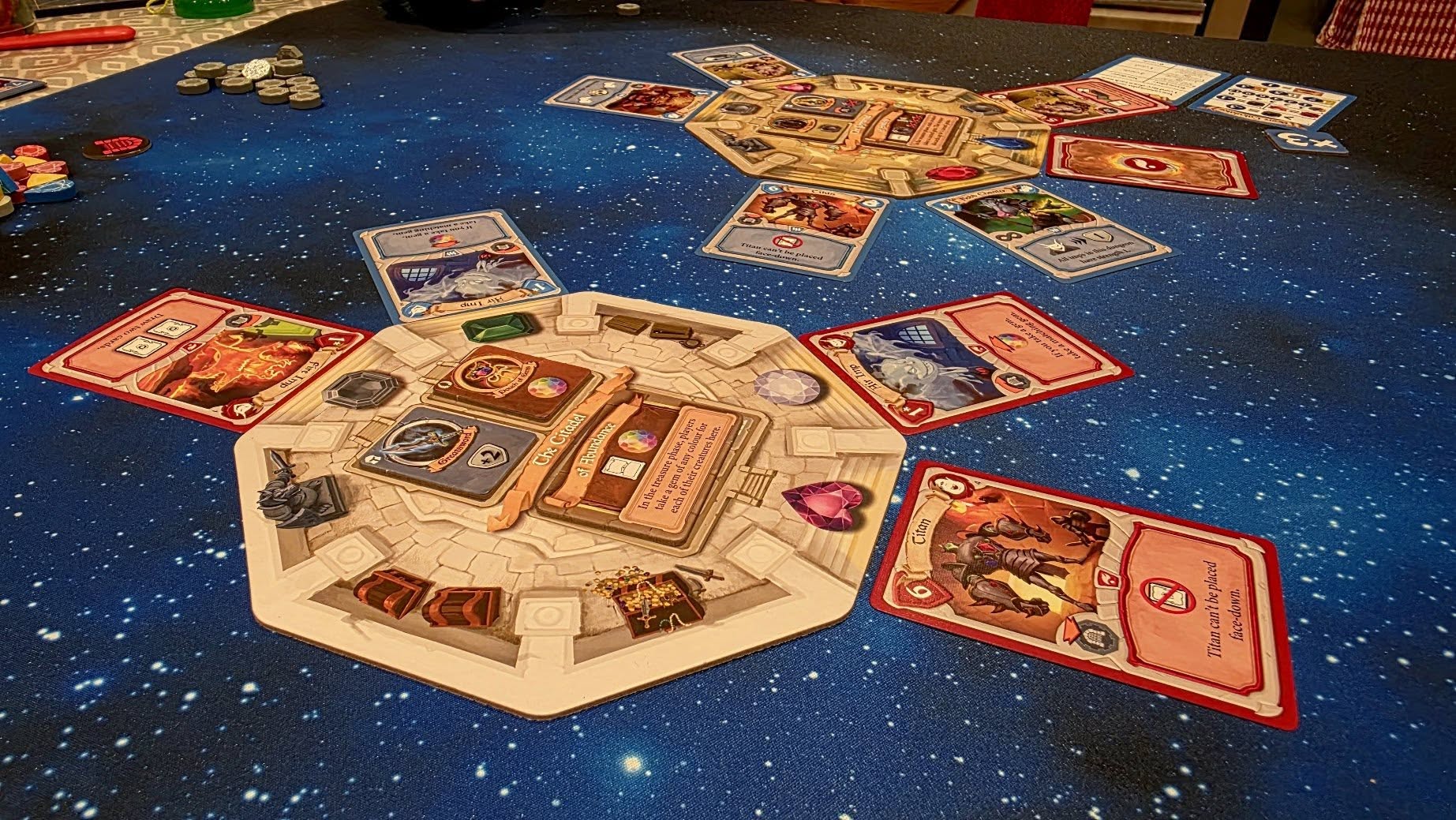
The game it actually reminds me of most is Divisible, which is probably Jack’s absolute favourite, with a dash of Dungeon Mayhem thrown in.
I really like Wizards & Co and think it’s a solid strategy game. That said, there are a few things that niggled at me and could have been developed further. For instance, while some treasures let you add an extra monster card to your deck, I think I’d have liked to see this expanded. As you progress through dungeons, it would’ve been nice to build a stronger deck—evolving as you go—giving the feeling of your monsters gaining strength and your strategy shifting over time.
When we played with pre-built decks of our own design, after two dungeons we already had a good idea of what our decks could do, which made the later dungeons slightly less interesting—though I can see the argument both ways.
Another issue—and this might seem at odds with what I said earlier the way cursed gems are scored at the end. While I love the in-game tactical tension of trying to avoid them, it did feel a bit harsh when, after a well-fought game, having even a couple of cursed gems nullified a big chunk of your score. I wonder whether it might work better if cursed gems just gave no points rather than taking points away.
Overall, though, I think this is a fun game, and it definitely delivers a big-box feel in a compact package.
Disclaimer: The game was kindly donated by Sinister Fish via the UK Board Game Review Circle. All opinions expressed in this review are my own.


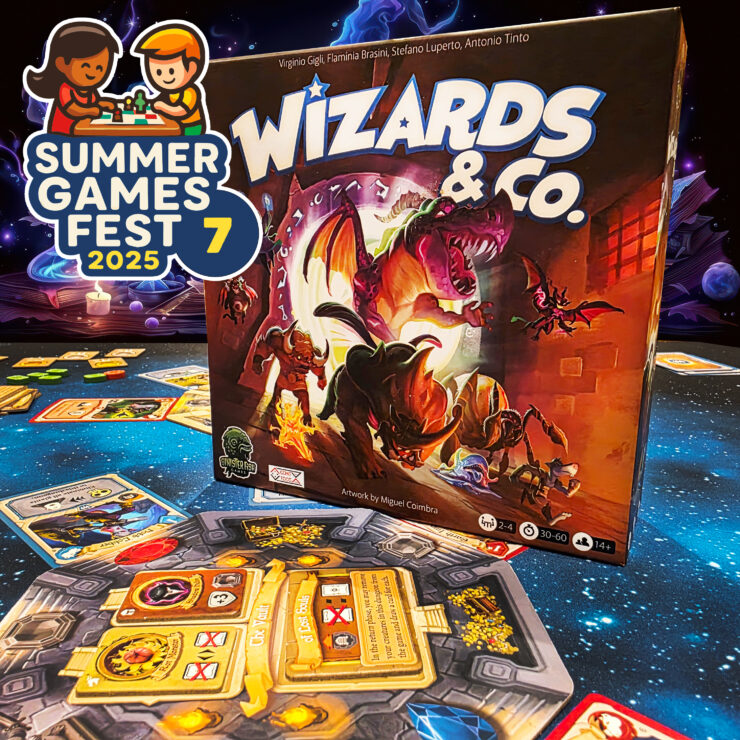
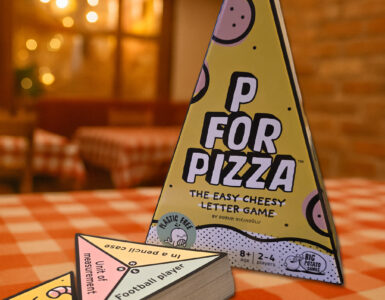
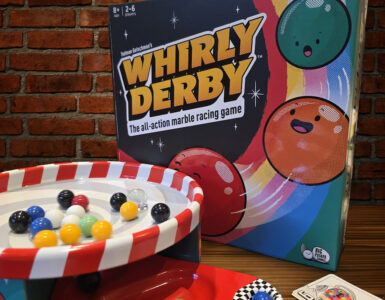










Add comment